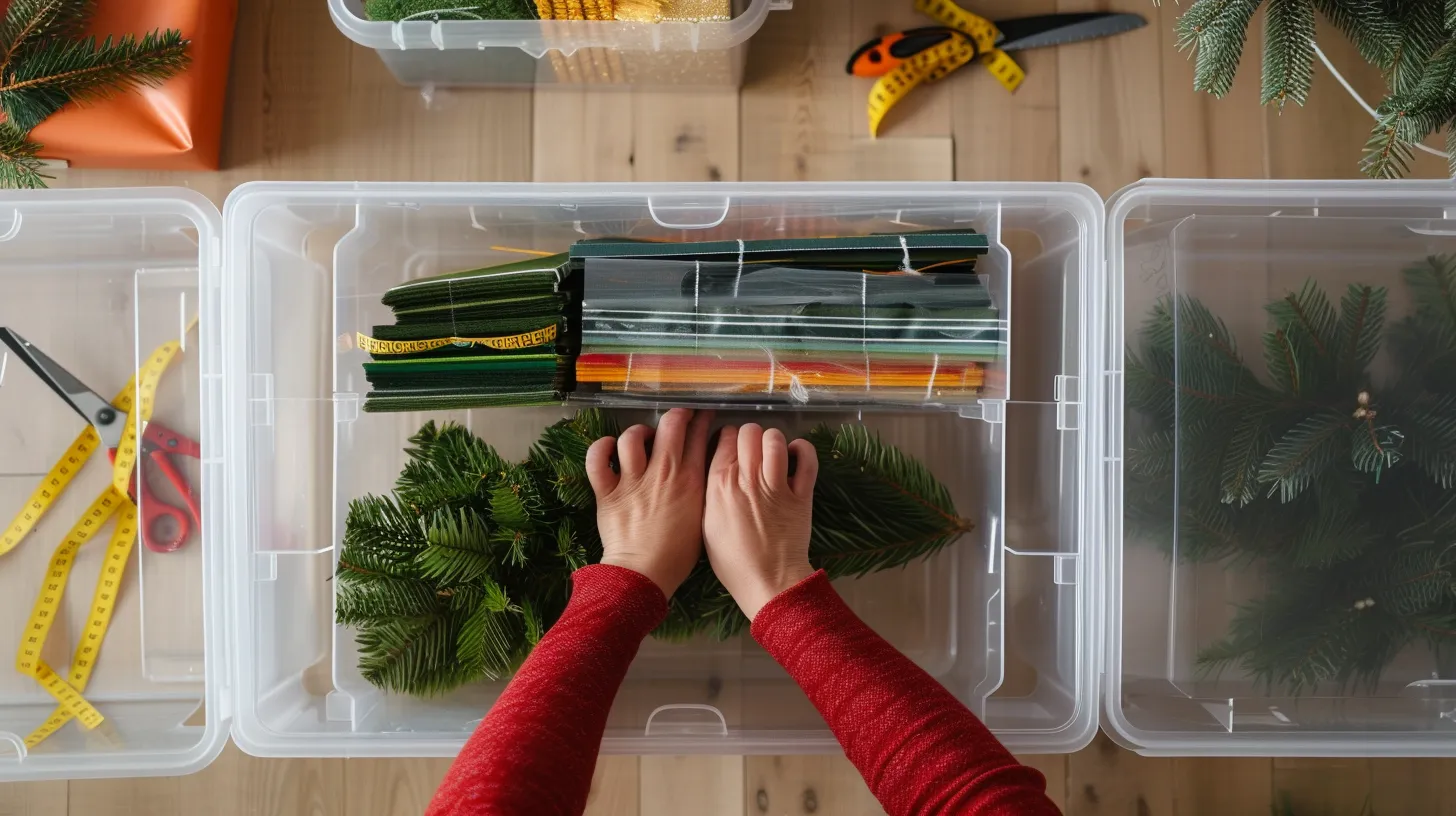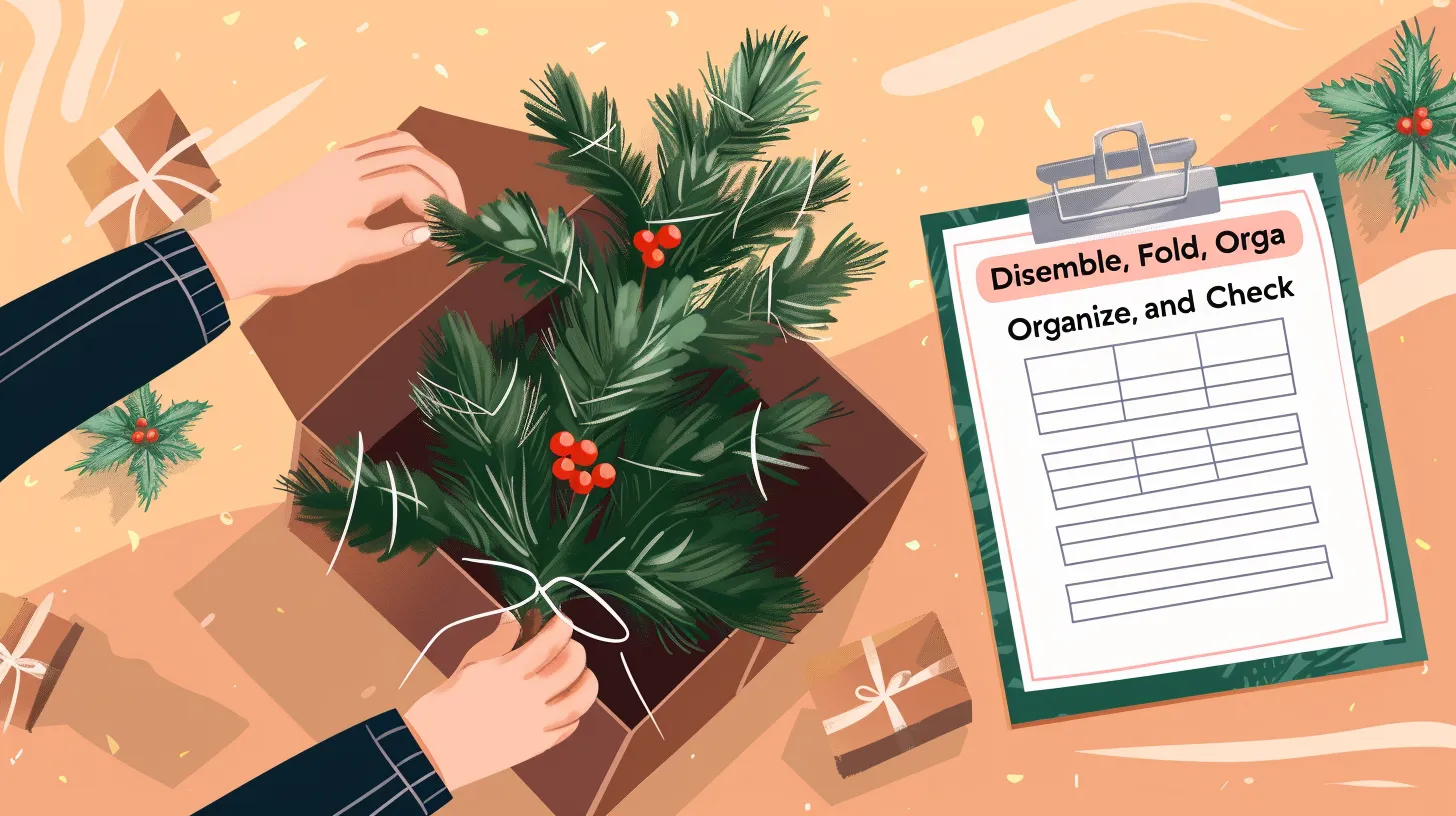The perennial challenge of fitting a Christmas tree back into its original box is a task that perplexes many after the festive season. Despite the joy and beauty a fully assembled and decorated tree brings to a home, the subsequent dismantling and storage can often feel like a puzzle with an elusive solution.
This discussion will guide you through a systematic approach, beginning with the preparation of your tree for disassembly, followed by effective branch compression techniques and wrapping strategies for storage.
By breaking down the process into manageable steps, we aim to transform this seemingly arduous task into a straightforward and achievable endeavor.
As we explore the intricacies of boxing and final checks, you'll discover valuable insights that not only preserve the quality of your Christmas tree for future seasons but also streamline the entire process for years to come.
Preparing Your Tree
Preparing your Christmas tree for storage involves several steps to ensure it remains in optimal condition for future festivities. For owners of artificial Christmas trees, one crucial step is putting your tree back in its original box or finding a suitable alternative, such as a mattress bag or wardrobe box, to keep it safe and compact.
This process starts with carefully disassembling each section of the tree, paying close attention to the branches. To efficiently fit the tree section back into the box, compact the branches tightly by gently hugging them and securing them with string. This method not only preserves the shape of the branches but also maximizes space within the box, making the task of fitting the Christmas tree back in less daunting.
Additionally, labeling each tree section before packing can facilitate a smoother assembly process for the next holiday season.
Dismantling the Sections

After ensuring your Christmas tree is ready for storage, the next critical step involves carefully dismantling it into its constituent sections to avoid any damage. For those with an artificial Christmas tree, this process is vital to maintain the longevity and aesthetics of your festive decoration. Dismantling the sections of your tree requires a methodical approach to ensure each part is preserved for future use.
Here are some guidelines to follow:
- Carefully Separate the Sections
- Start from the top of the tree and work your way down.
-
Gently detach each section, ensuring you do not apply excessive pressure on the points where the branches connect to the tree stem or any joints or connecting parts.
-
Pin the Branches
- Before separating the sections, pin the branches against the tree stem to maintain firmness and avoid any branches swinging out and causing damage.
- This action helps in keeping the tree's shape and ensures a smoother process when you connect the sections back together.
Branch Compression Techniques

To effectively reduce the volume of an artificial Christmas tree for storage, employing branch compression techniques is essential. These methods are crucial for fitting your tree back in the box or storage bag, ensuring that it remains in good condition for the next holiday season.
Begin by giving each extended piece of the tree a gentle bear hug to compact the branches without causing damage. This approach helps to minimize the space needed to store your tree.
Next, tie the branches with thick twine or yarn, using a slipknot instead of a bow for secure fastening. This step keeps the branches compacted and prevents them from expanding inside the storage container. It's important to avoid putting excess pressure on the points where the branches connect to the tree stem, as this can lead to breakage.
Additionally, steer clear of using rubber bands for securing branches, as they can deform the shape of your tree and are difficult to remove.
Wrapping for Storage

Having compressed the branches through careful techniques, it is essential to focus on securely wrapping the artificial Christmas tree for storage. This step ensures that the tree remains in good condition, preventing any damage or deformation during the storage period.
Wrapping for storage involves a few critical considerations:
- Choice of Wrapping Material:
- Use a mattress bag or wardrobe box for extra space, accommodating not just the Christmas tree but also leaving space left for decorations.
-
Consider a tree storage bag specifically designed for this purpose, offering durability, flexibility, and features like tie-downs and wheels for easy movement.
-
Secure Wrapping Techniques:
- Securely wrap each separate section of the tree in plastic wrap to prevent shifting within the box.
- For additional protection, wrap the tree in old sheets before securing with twine or string , ensuring every part is covered.
Boxing and Final Checks

With the artificial Christmas tree securely wrapped, the next step involves carefully placing it into the storage box, ensuring that it fits snugly and is well-protected during the off-season. Utilizing the original box as a storage solution not only saves space but also preserves the tree's shape, making it easier to put it back together next Christmas. It's essential to remember that the way trees are packed in the factory box is designed to minimize space and protect the tree's components, so mimicking that arrangement as closely as possible is advisable.
Before sealing the box, conduct a final check to ensure no parts of the tree are sticking out or improperly folded, as this could cause damage over time. If the original box is not available or has deteriorated, consider investing in a durable, appropriately sized artificial tree storage box. These are designed to accommodate trees of various sizes and often come with features that aid in the preservation and organization of your Christmas decor.
After the tree is securely boxed, label the box clearly with its contents and the year, if you rotate between multiple trees. This labeling will streamline the decorating process for the next holiday season, ensuring that your artificial Christmas tree remains a cherished part of your festive traditions for years to come.










